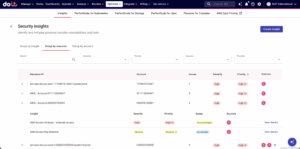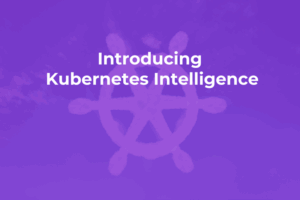Mastering FinOps Automation: Strategies to Optimize Cloud Costs
Managing cloud spending is a big challenge for finance leaders, especially as organizations increasingly rely on cloud resources to power operations. Many struggle to maintain cost efficiency in the face of rapidly growing, unpredictable cloud costs and a lack of clear visibility into where that money is going. The solution is finding the right (albeit fluctuating) balance between driving innovation and keeping financial control. But that’s easier said than done.
That’s where FinOps comes in—a practice focused on bringing financial accountability to cloud spending. What began as manual processes evolved into something much more advanced, with smart automation making workflows simpler and more efficient. It’s important to note that automation represents a more mature stage in the FinOps journey. Organizations typically need to establish fundamental FinOps practices, processes, and cultural alignment before effectively implementing automation. While the need for FinOps automation is clear, figuring out where to start or how to fit these tools into existing financial plans can feel overwhelming.
The best FinOps practices help pinpoint how FinOps automation can turn reactive cost management into proactive financial planning. By aligning cloud spending with your business goals, you can control, create accountability, and support growth—all while keeping cloud costs in check.
FinOps automation: What kinds of tasks can be automated?
FinOps automation makes managing financial operations in the cloud much more efficient and effective. By using programmatic solutions, it cuts down on manual work, boosts accuracy, and helps optimize costs. With automation, organizations uncover deeper insights into cloud spending, ensure more efficient resource use, and maintain better control of finances with less hassle.
From a governance standpoint, implementing an automation approval policy is useful for managing FinOps automation at scale. This policy helps ensure proper oversight that aligns initiatives with organizational policies and mitigates risks like infrastructure instability or financial reporting issues. A structured governance framework helps balance automation benefits with potential downsides.
Automation across the FinOps lifecycle
Understanding where automation fits within the FinOps lifecycle is crucial for successful implementation. The three core phases—Inform, Optimize, and Operate—each present distinct automation opportunities:
- Inform phase: Automation focuses on data collection, cost visibility, and reporting. This includes automated tagging, cost anomaly detection, and dashboard generation.
- Optimize phase: Automation identifies optimization opportunities through rightsizing recommendations, idle resource detection, and scheduled resource management.
- Operate phase: Automation enforces policies and maintains ongoing optimization through budget guardrails, reserved capacity management, and compliance monitoring.
Organizations typically progress through these phases sequentially, with automation sophistication increasing as FinOps maturity develops.
Prerequisites for successful automation
Before implementing automation, organizations must establish foundational elements:
- Reliable tagging strategy: Consistent, comprehensive resource tagging across all cloud resources
- Clean telemetry: Accurate cost and usage data collection with proper attribution
- Policy frameworks: Clear governance policies defining automation boundaries and approval workflows
- Team alignment: Collaboration between finance, engineering, and operations teams
- Risk tolerance definition: Understanding of acceptable automation scope and safety requirements
Automation modes: insights vs. actions
FinOps automation operates in two distinct modes, each serving different organizational needs and risk profiles:
Recommendation mode: Surfaces insights and suggests actions while keeping humans in the decision loop. This approach offers lower risk, greater control, and builds trust in automation systems.
Execution mode: Automatically implements changes based on predefined rules and thresholds. This provides maximum efficiency but requires robust safeguards and higher operational maturity.
Organizations should start with recommendation mode and gradually progress to execution mode as confidence and maturity increase.
Key automation areas
Here are the main areas where automation makes the biggest difference:
1. Resource tagging and allocation tracking (Inform Phase)
Proper resource tagging is essential for keeping cloud costs organized and tied to the right department, project, or cost center. Automated tagging systems take the hassle out of this process by applying consistent labels to resources, reducing the risk of human error.
Prerequisites: Established tagging taxonomy, resource naming conventions, and organizational structure mapping
Implementation examples:
- AWS Tag Editor with Lambda functions for automated tag enforcement
- Azure Policy for automatic tag inheritance and compliance
- Google Cloud Asset Inventory for tag monitoring and correction
- Terraform providers like Infracost for infrastructure-as-code tagging
Automation modes: Both recommendation (flagging untagged resources) and execution (automatic tag application based on resource patterns)
Over time, automated tagging makes financial reporting clear and accurate, helping you avoid “mystery” cloud costs.
2. Cost anomaly detection (Inform Phase)
Sudden spikes in cloud costs can throw off budgets and make financial planning tricky. However, teams can proactively prevent these issues using automation.
Prerequisites: Historical cost data, established spending baselines, and defined threshold policies
Implementation examples:
- AWS Cost Anomaly Detection with SNS notifications
- Azure Cost Management alerts with Logic Apps integration
- Google Cloud Billing alerts with Cloud Functions
- Third-party platforms like CloudHealth, Cloudability, or Apptio Cloudability
Automation modes: Primarily recommendation mode, alerting teams to investigate anomalies while providing context and suggested actions
Catching anomalies early helps finance teams prevent expensive surprises at the end of the month and quickly find the source of overspending, whether it’s a misconfigured service or unexpected demand.
3. Idle resource identification (Optimize Phase)
Cloud environments often contain hidden costs from underutilized or idle resources, such as oversized instances, unused load balancers, or orphaned storage volumes.
Prerequisites: Performance monitoring data, utilization thresholds, and resource lifecycle policies
Implementation examples:
- AWS Trusted Advisor with Systems Manager automation
- Azure Advisor recommendations with PowerShell scripts
- Google Cloud Recommender API with Cloud Scheduler
- Third-party tools like ParkMyCloud, Densify, or Spot.io
Automation modes: Recommendation mode for analysis and suggestions, execution mode for automatic resource shutdown or deletion based on strict criteria
Some systems can even make these changes automatically based on set rules, saving both money and time. This way, organizations only pay for what they need.
4. Scheduled resource management (Optimize Phase)
Not every workload has to run 24/7, especially in non-production environments like development, testing, or staging. By using automation to schedule these resources to shut down during off-hours, organizations can significantly cut cloud costs.
Prerequisites: Environment classification, business hour definitions, and exception handling procedures
Implementation examples:
- AWS Instance Scheduler with CloudFormation templates
- Azure Automation runbooks with start/stop VM solutions
- Google Cloud Scheduler with Compute Engine API
- Kubernetes-based solutions like KEDA or VPA for container workloads
Automation modes: Primarily execution mode, automatically starting and stopping resources based on schedules, with override capabilities for urgent needs
According to AWS, implementing scheduled start and stop times for Amazon EC2 instances in development or test environments can result in cost savings of up to 70%. Advanced scheduling tools can even sync with calendars or DevOps platforms to make sure resources are ready exactly when you need them.
5. Rightsizing recommendations (Optimize Phase)
Overprovisioning resources is a common issue in cloud computing, as teams often allocate more capacity than they need to avoid performance bottlenecks.
Prerequisites: Performance metrics collection, application performance requirements, and change management processes
Implementation examples:
- AWS Compute Optimizer with CloudWatch metrics
- Azure Advisor with Azure Monitor integration
- Google Cloud Recommender with monitoring data
- Third-party platforms like Turbonomic, Densify, or Harness Cloud Cost Management
Automation modes: Recommendation mode generates suggestions for human review (lower risk), while execution mode implements changes automatically (higher efficiency, requires strong safeguards).
By using machine learning, these tools can predict future needs based on historical trends and ensure resources align with actual requirements, ultimately reducing waste and improving performance.
6. Reserved capacity management (Operate Phase)
Managing Reserved Instances and Savings Plans requires ongoing attention, but automation makes this easier by tracking usage, spotting underused reserved capacity, and suggesting new commitments.
Prerequisites: Usage pattern analysis, commitment strategy, and financial planning alignment
Implementation examples:
- AWS Cost Explorer API with Lambda functions for RI analysis
- Azure reservation recommendations with Power BI dashboards
- Google Cloud Committed Use Discounts with BigQuery analysis
- Third-party platforms like CloudHealth, Apptio, or DoiT Navigator
Automation modes: Recommendation mode for purchase suggestions and utilization alerts, execution mode for automatic commitment modifications (where supported by cloud providers)
Take QMENTA, a medical imaging platform that worked with DoiT to implement a CUD (Committed Use Discounts) automation strategy for Google Cloud. This automation ensured QMENTA automatically benefited from the lowest available price without the need to continually search for the best discounts. As a result, QMENTA reduced its cloud expenditure by 22% in just nine months while preparing for significant growth.
7. Budget enforcement with guardrails (Operate Phase)
Keeping cloud budgets under control is essential, especially as usage grows. Automated guardrails help by activating when costs approach set limits.
Prerequisites: Budget allocation frameworks, approval workflows, and escalation procedures
Implementation examples:
- AWS Budgets with IAM policy automation
- Azure Cost Management with Policy assignments
- Google Cloud Billing budgets with Pub/Sub triggers
- Service mesh solutions like Istio for microservices-level controls
Automation modes: Execution mode for immediate cost controls, with notification systems for stakeholder awareness and override capabilities
These tools ensure spending stays in check and aligns with your goals while giving you the flexibility to support important growth initiatives.
8. Data retention and audit logging policy (Operate Phase)
Automating data retention and audit logging policies helps organizations stay compliant while preventing inefficiencies and keeping storage costs in check.
Prerequisites: Regulatory requirements mapping, data classification schemes, and retention policy definitions
Implementation examples:
- AWS S3 Lifecycle policies with CloudTrail logging
- Azure Blob Storage lifecycle management with Activity logs
- Google Cloud Storage lifecycle rules with Audit logs
- Data governance platforms like Collibra, Informatica, or Alation
Automation modes: Execution mode for lifecycle management and compliance enforcement, with audit trails for accountability
This makes it easy to move rarely accessed data to cheaper storage, archive historical information, and delete unnecessary data, while maintaining detailed logs of all cost-related actions and decisions.
The short- and long-term benefits of FinOps automation
FinOps automation brings quick wins and long-term benefits that support your bigger business goals. Importantly, automation makes true decentralization of cloud cost management possible by giving engineers the tools to take action with confidence. With built-in financial guardrails, technical teams can make resource decisions on their own without worrying about blowing the budget. This lets organizations share financial responsibility, keep the right controls in place, and speed up innovation with granular reporting, scoped permissions, and self-service tooling tied to budgets or tags.
Short-term benefits
The immediate gains from FinOps automation include significant time savings for both finance and engineering teams. Manual reporting that once took days now takes only minutes. Cost visibility also improves dramatically, with dashboards showing real-time spending across projects, teams, and services. This transparency builds accountability and helps speed decision-making.
Reducing errors is another big win, as automation eliminates human mistakes from cost allocation and reporting. Many companies also see quick savings by cutting waste, potentially lowering cloud bills by up to 40% just a few months after getting started.
Long-term strategic benefits
While short-term savings are great, the long-term strategic advantages of FinOps automation are what really deliver value:
Improved forecasting accuracy: Through historical data and usage patterns, automated forecasting can predict future costs with greater precision, enabling more accurate budgeting and financial planning.
Cultural transformation: Over time, automated cost tracking and accountability help build a FinOps culture of cost awareness, where teams keep financial impacts in mind alongside their technical goals.
Business-technology alignment: FinOps automation links tech spending directly to business results, making it easier for leaders to see the real ROI of digital projects and make smarter investment choices.
Competitive advantage: Companies that master cloud cost efficiency can allocate savings to innovation, potentially outpacing competitors who overspend on infrastructure.
The value of FinOps automation tools
The right FinOps automation tools can take cloud financial management from a slow, manual grind to a smart, data-driven strategy. These tools usually fall into a few key categories:
Cloud-native tools: Services provided by cloud platforms like AWS Cost Explorer, Google Cloud’s Cost Management, and Azure Cost Management offer basic automation capabilities built directly into your cloud environment.
Strengths:
- Deep integration with native cloud services and billing systems
- No additional licensing costs or data transfer requirements
- Basic automation features like budgets, alerts, and simple recommendations
- Direct access to granular billing and usage data
Limitations:
- Limited cross-cloud visibility—each platform only shows its own costs
- Basic automation capabilities focused primarily on monitoring and alerting
- Minimal advanced features like ML-driven optimization or complex policy enforcement
- Reporting and dashboards often lack customization for organizational needs
- Integration with external financial systems typically requires custom development
Cloud-native tools are great starting points, but they usually need some extra support to fully automate FinOps strategies, especially when working across multiple cloud platforms.
Third-party solutions: Specialized platforms such as DoiT provide multi-cloud visibility, advanced automation features, and customizable dashboards that go beyond native tools’ capabilities.
Strengths:
- Unified view across AWS, Azure, Google Cloud, and often private cloud environments
- Advanced automation capabilities including ML-driven recommendations and policy enforcement
- Sophisticated reporting with customizable dashboards and executive-level summaries
- Integration capabilities with ITSM, financial planning, and business intelligence systems
- Dedicated support and professional services for implementation
Considerations:
- Additional licensing costs and potential data egress charges
- Learning curve for platform-specific features and workflows
- Dependency on vendor roadmap for new cloud service support
- May require API access and permissions across multiple cloud accounts
Custom automation: If your organization has unique needs, custom scripts and internal tools can help by automating workflows designed specifically for your business processes. Building internal tools and scripts can address unique organizational needs, but requires significant engineering investment and ongoing operational commitment.
Common custom automation examples:
- Terraform cost guards: Infrastructure-as-code policies that enforce cost limits and resource constraints
- Lambda-based scheduling: Custom serverless functions for complex resource lifecycle management
- CUR parsers: Cost and Usage Report processing scripts for specialized reporting needs
- Policy enforcement engines: Custom rules engines for organizational compliance and governance
- Integration adapters: Connectors between cloud billing APIs and internal financial systems
Engineering investment requirements:
- Development expertise: Cloud APIs, infrastructure-as-code, serverless computing, and data processing skills
- Ongoing maintenance: Regular updates for new cloud services, API changes, and evolving business requirements
- Operational overhead: Monitoring, debugging, and scaling custom automation systems
- Security considerations: Proper credential management, access controls, and audit logging
Operational risks:
- Single points of failure: Custom scripts often lack enterprise-grade reliability and error handling
- Knowledge dependency: Risk of knowledge silos when key developers leave the organization
- Compliance gaps: Custom solutions may not meet audit and governance requirements without careful design
- Scalability challenges: Home-grown solutions often struggle with enterprise-scale data volumes and complexity
When choosing tools, don’t just focus on the basics. Think about:
- Integration ability with your current financial systems and cloud services
- Support for multi-cloud setups
- Whether they’re customizable to fit your organization’s structure
- Scalability to grow alongside your cloud usage
- Machine learning features for smarter, predictive insights
Sure, FinOps helps engineers manage cloud costs, but the best FinOps tools show you costs and help you take action. With automated features based on policies, thresholds, and business rules, they make managing and optimizing cloud spending way easier.
Do’s and don’ts for implementing FinOps automation
When implementing FinOps automation, it’s important to follow best practices to maximize your efficiency and cost savings.
Do’s:
Create clear tagging standards: Define resource tags that map to your organizational structure (cost centers, business units, environments, applications) and implement automated tag inheritance and enforcement. Without accurate cost attribution through tags, automation will optimize the wrong metrics or misallocate savings.
Begin with high-impact areas: Prioritize automation in non-production environments (dev/test/staging) where aggressive cost controls won’t affect customer experience. Focus on obvious waste like idle resources running 24/7, oversized instances with <20% utilization, or unattached storage volumes.
Involve both finance and engineering: Create FinOps automation policies that require both finance approval (for budget impact) and engineering review (for operational safety). Establish clear escalation paths when automated actions conflict with performance requirements.
Implement gradual rollouts: Start with recommendation-only modes that surface insights without taking action, then gradually enable execution-based automation as team confidence and process maturity increase. This builds trust while preventing automation-induced outages.
Measure and celebrate success: Share the impact of automation initiatives by highlighting the time and money saved. Celebrating your achievements is a great way to build momentum and get everyone on board, such as “reduced monthly reporting cycle from 40 hours to 4 hours.”
Don’ts:
Don’t automate broken processes: Fix underlying problems in your cloud cost management approach BEFORE automating them.
Don’t rely solely on automation for FinOps culture: Technology cannot replace the need for cost-conscious engineering practices, architectural decisions that consider TCO, and business stakeholder engagement in cloud financial management.
Don’t set and forget: Cloud services evolve rapidly. New instance types, pricing models, and optimization opportunities emerge regularly, so plan for quarterly automation policy reviews and updates to maintain effectiveness.
Don’t prioritize savings over performance: Implement automation safeguards that prevent cost-saving actions during critical business periods (peak traffic, end-of-quarter processing, etc.) and maintain performance SLAs even under aggressive cost optimization.
Don’t implement too many tools: Stick to two or three main platforms instead of using a different tool for every single need. Having too many tools can lead to data silos, add unnecessary complexity, and make it harder to keep policies consistent across your setup.
Don’t just identify savings without execution: Finding cost optimization opportunities is only half the battle. Make sure you have a clear plan to act on these identified savings instead of just piling them onto a growing list of unimplemented ideas. The real value comes from taking action, not just finding opportunities.
Streamline FinOps with automation
FinOps automation helps organizations like yours move from reactive cost management to proactive control over cloud finances. Organizations implementing comprehensive automation across the Inform-Optimize-Operate lifecycle typically achieve cost reductions within six months while building sustainable financial discipline that scales with cloud growth.
It all starts with a strong foundation in progressive maturity, which means establishing foundational tagging taxonomies and governance frameworks before advancing to ML-driven optimization and autonomous remediation. Organizations that skip these foundations often struggle with automation accuracy and stakeholder trust, while those that follow the maturity progression are able to achieve both immediate savings and long-term competitive advantages through cost-efficient innovation funding.
FinOps automation demands integrated platforms that combine real-time anomaly detection, predictive rightsizing, automated commitment management, and policy-driven guardrails within unified governance frameworks that support decentralized decision-making.
DoiT International’s cloud optimization platform provides enterprise-grade FinOps automation through integrated cost intelligence, automated CUD/RI management, and Kubernetes cost optimization with granular workload attribution. DoiT’s FinOps-certified consultants deliver implementation strategies that balance automation sophistication with organizational risk tolerance, making sure governance-compliant automation aligns with enterprise financial planning and cloud operating models.
Learn more about how many companies are achieving both time and cost savings with FinOps automation by downloading our free resource on automating cloud cost optimization.



